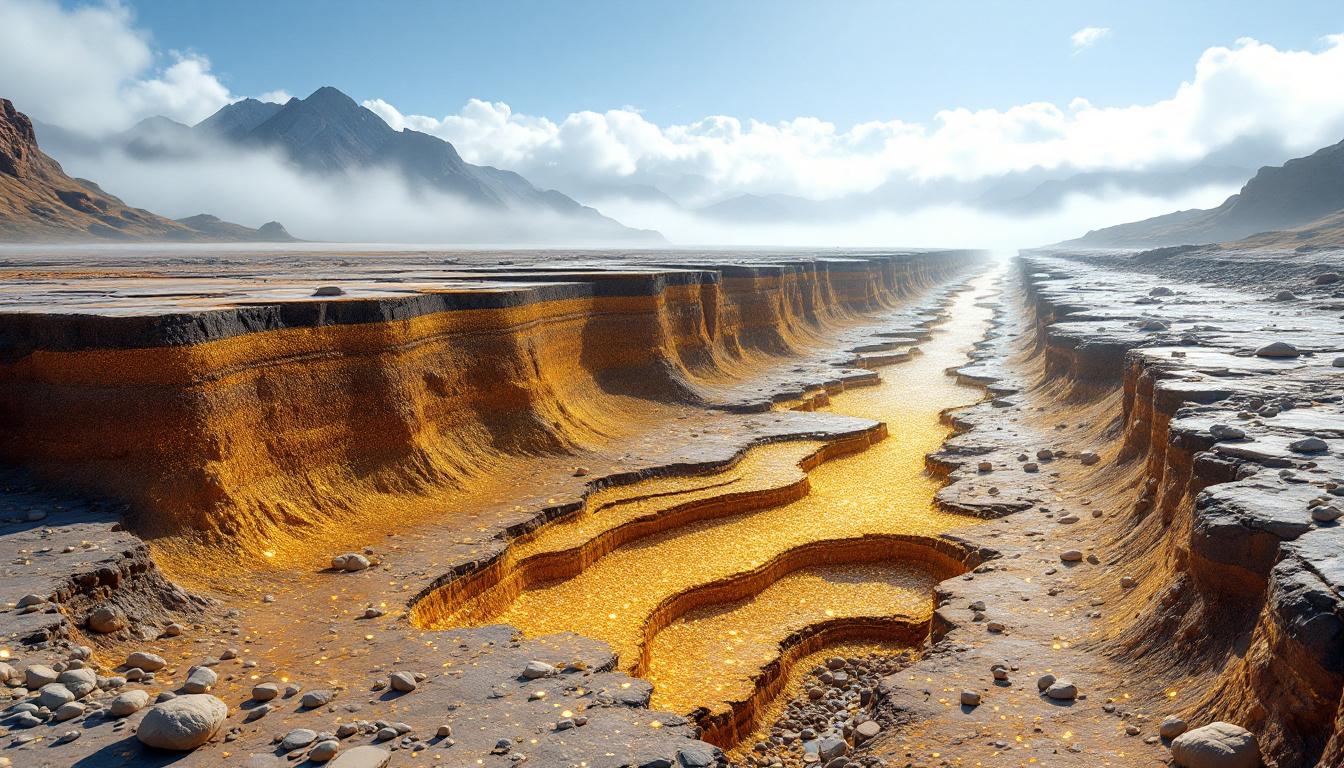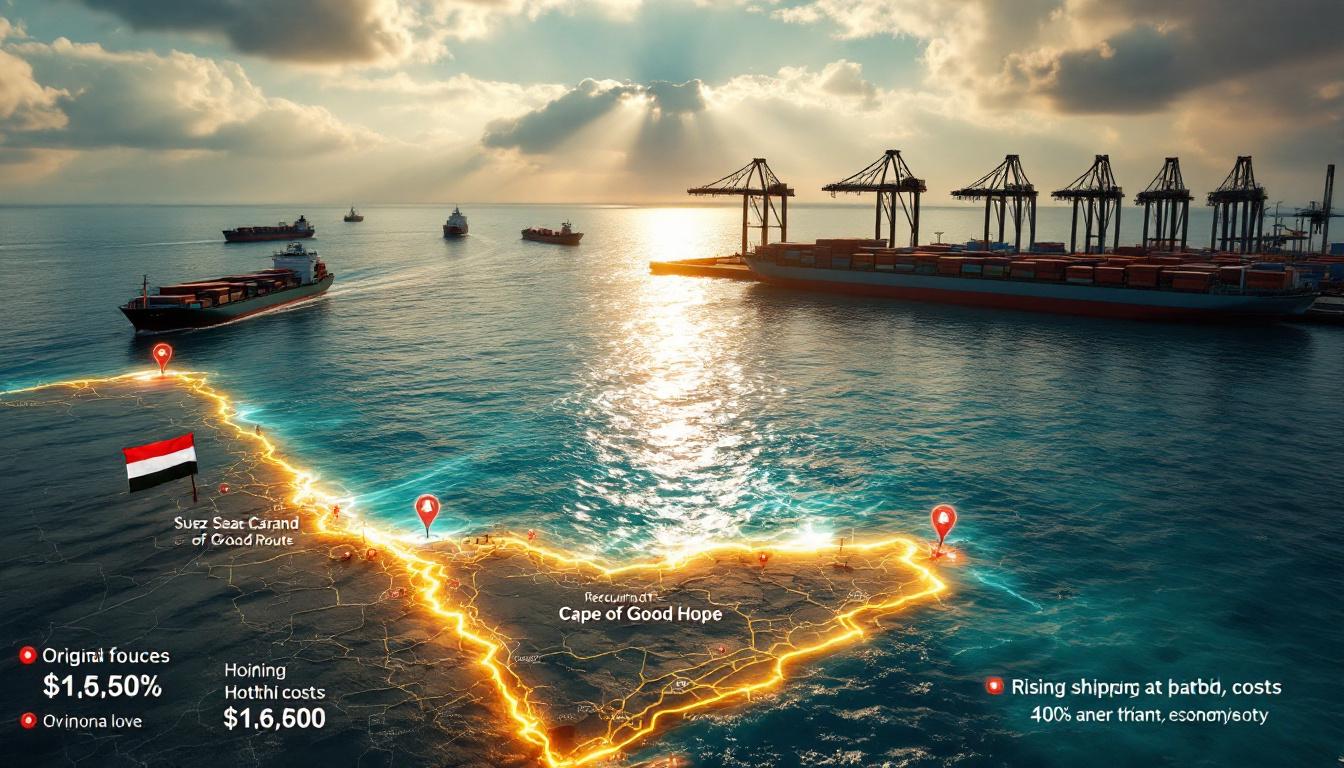Thorium Reserves by Country in 2025: Global Distribution and Strategic Importance
The world's energy landscape is on the brink of transformation as nations increasingly look beyond traditional nuclear fuels. At the center of this potential shift is thorium, a naturally occurring radioactive element that many experts believe could revolutionize clean energy production. With global reserves estimated at 14.6 million tons and distributed unevenly across continents, thorium reserves by country reveal significant strategic implications as nations position themselves for future energy security.
What is Thorium and Why is it Important?
Thorium (Th-232) is a naturally occurring radioactive metal with a half-life of approximately 14 billion years. It forms primarily through the decay of uranium and is approximately three to four times more abundant in the Earth's crust than uranium, with an average concentration of 6 parts per million (ppm) in soil, 12 ppm in rocks, and trace amounts in water.
The element is typically found in several thorium-bearing minerals, with the most significant being monazite, thorite, and thorianite. Monazite sands, particularly prevalent in coastal regions of India and Brazil, represent some of the richest and most accessible thorium deposits globally, with concentrations sometimes reaching 12% thorium oxide.
Thorium's strategic importance stems from its potential as an alternative nuclear fuel. Unlike uranium-based reactors, thorium-fueled reactors produce significantly less long-lived radioactive waste and offer inherent safety advantages. According to Department of Energy projections, one ton of thorium can potentially generate energy equivalent to approximately 200 tons of uranium or 3.5 million tons of coal, making it an exceptionally energy-dense resource.
Current applications remain largely experimental, with India leading in thorium fuel cycle development through its three-stage nuclear program. However, as conventional uranium supplies face long-term sustainability challenges, thorium's abundance makes it increasingly attractive for future energy security planning. This growing interest is directly connected to addressing critical mineral shortages impacting the global clean energy transition.
Global Thorium Reserves: A Comprehensive Overview
Total Global Reserves
The world's identified thorium reserves by country stand at approximately 14.6 million tons as of current estimates for 2025. This substantial figure represents known, economically recoverable thorium across all continents, though the distribution is highly uneven. According to international geological surveys, these reserves could theoretically generate electricity equivalent to several centuries of global consumption if fully utilized in advanced reactor designs.
When compared to other strategic metals and resources, thorium's global abundance is striking. It surpasses uranium reserves (approximately 5.7 million tons) by a factor of nearly three, highlighting its potential as a long-term energy solution. The reserves also dwarf those of rare earth elements collectively (approximately 120 million tons), though extraction economics differ significantly.
Commonwealth of Independent States (CIS) Dominance
Perhaps the most remarkable aspect of global thorium distribution is the concentration within the Commonwealth of Independent States (CIS). According to the standardized reporting methodology used for these nations, each CIS member country reports identical reserves of 1.5 million tons, creating a combined control of approximately 12 million tons—or 82% of global thorium reserves.
This unusual reporting approach stems from post-Soviet resource accounting conventions that have continued into the present day. The identical figures reported by countries including Uzbekistan, Kazakhstan, Azerbaijan, Belarus, Kyrgyzstan, Moldova, and Armenia raise questions about methodological consistency, yet represent the official figures recognized by international agencies.
The strategic implications of this concentration are profound. The CIS collective effectively controls the majority of the world's potential thorium fuel supply, creating both opportunities for regional energy development and potential geopolitical leverage in future energy markets. This concentration of resources is an important element of mining's crucial and paradoxical role in the clean energy transition.
How Are Thorium Reserves Measured and Classified?
Thorium reserve measurement follows established methodologies developed by international organizations including the International Atomic Energy Agency (IAEA) and the Nuclear Energy Agency (NEA). Unlike many minerals measured primarily by mass, thorium reserves are typically classified by both quantity and concentration, with economically viable deposits generally containing at least 0.05% thorium oxide.
The UNFC (United Nations Framework Classification) system provides the standard for thorium reserve classification, categorizing deposits based on three fundamental criteria: economic and commercial viability (E), field project status and feasibility (F), and geological knowledge (G). This creates a three-dimensional classification framework that allows for consistent international reporting.
The key distinction between "reserves" and "resources" is critical for accurate assessment. Reserves represent thorium that can be economically extracted using current technology, while resources include both identified deposits that may become economically viable in the future and undiscovered deposits believed to exist based on geological inference.
Measurement challenges include the often dispersed nature of thorium in host minerals, variable concentration levels within deposits, and the fact that thorium is frequently a by-product of rare earth element or titanium mining rather than a primary extraction target. This creates significant variability in reporting accuracy between nations with advanced geological survey capabilities and those with less developed systems.
Which Countries Have the Largest Thorium Reserves?
CIS Countries (1.5M tons each)
The Commonwealth of Independent States dominates global thorium reserves by country, with each member country reporting identical figures of 1.5 million tons. While this standardized reporting raises methodological questions, these nations collectively control the vast majority of the world's thorium.
Uzbekistan's thorium resources are primarily concentrated in monazite-rich deposits near the Aral Sea region, with approximately 78% of reserves located in this area. The country's established uranium mining infrastructure provides potential synergies for future thorium extraction.
Kazakhstan, already the world's leading uranium producer, possesses extensive thorium reserves primarily located in its eastern regions. The nation's advanced mining sector and established nuclear industry position it uniquely for potential thorium development, with pilot extraction projects already underway in conjunction with rare earth element mining operations.
Azerbaijan's thorium reserves remain largely undeveloped, concentrated primarily in mountainous regions where accessibility challenges have limited exploration efforts. Belarus similarly has conducted limited thorium-specific geological surveys, despite its official 1.5 million ton reserve figure.
Kyrgyzstan's thorium deposits are predominantly located within the Tian Shan mountain region, where approximately 78% of the country's reserves reside. Complex geological formations have complicated accurate assessment. Armenia, with historical ties to Soviet nuclear development, has conducted the most thorough characterization of its thorium resources among CIS members.
Major Non-CIS Reserve Holders
Outside the CIS, several countries possess significant thorium reserves that position them as potential leaders in future thorium energy development.
India stands at the forefront with 846,500 tons of confirmed thorium reserves, primarily in the form of monazite sands along its southern coastline. The Kerala coastal region alone contains approximately 32% of global monazite sand deposits according to the World Atlas list of countries by thorium reserves. India's thorium holds particular strategic importance as the country has developed a three-stage nuclear program specifically designed to utilize these domestic resources, with the Advanced Heavy Water Reactor (AHWR) representing one of the world's most advanced thorium-based energy systems.
Brazil follows with 632,000 tons, concentrated primarily in the monazite-rich beach sands of Espirito Santo and Rio de Janeiro states. Brazilian thorium is largely a by-product of existing rare earth element mining operations, providing economic advantages for potential extraction.
The United States possesses approximately 595,000 tons of thorium reserves, distributed across several states with significant concentrations in Idaho, Montana, and the Carolinas. The Lemhi Pass district on the Montana-Idaho border represents one of the largest thorium vein-type deposits globally, with ore grades averaging 0.43% thorium oxide.
Egypt's 380,000 tons of thorium reserves, primarily located in the Nile delta region, represent an emerging resource of growing importance as the country develops its nuclear energy capabilities. Similarly, Turkey's 374,000 tons, concentrated in the Anatolian plateau, position it as a potential regional leader in thorium development. These developments contribute to Africa's mining boom for critical minerals.
Medium-Range Thorium Reserve Countries
Countries with 100K-300K tons
Several nations possess thorium reserves that, while not dominant globally, represent significant potential energy resources and strategic assets.
Venezuela's 300,000 tons of thorium reserves remain largely unexplored and undeveloped due to political and economic factors affecting the nation's mining sector. Despite having South America's second-largest thorium resources, limited geological survey work has been conducted since the early 2000s.
Canada's 172,000 tons are primarily concentrated in the provinces of Ontario and Saskatchewan, often associated with uranium deposits. The country's advanced nuclear industry and research infrastructure provide substantial advantages for potential thorium development, with the Canadian Nuclear Laboratories actively researching thorium fuel cycles.
South Africa's 148,000 tons are predominantly found in conjunction with existing mining operations for titanium, zirconium, and rare earth elements. The country's established mining expertise and infrastructure create significant opportunities for thorium extraction as a secondary product, potentially improving the economics of existing operations.
China officially reports 100,000 tons of thorium reserves (including 9,000 tons from Taiwan), though multiple geological assessments suggest this figure may be substantially underestimated. Recent discoveries in Inner Mongolia and Guangdong province indicate potentially significant additional resources not yet included in official tallies. China's aggressive development of advanced nuclear technologies, including molten salt reactors specifically designed for thorium fuel, demonstrates the strategic importance it places on this resource.
Countries with 50K-99K tons
Norway's 87,000 tons of thorium reserves benefit from the country's world-leading geological survey technologies and sustainable mining practices. Norwegian thorium is primarily found in the Fen Complex, where innovative extraction techniques are being developed to minimize environmental impact.
Greenland reports between 86,000 and 93,000 tons—the only country with a range rather than a specific figure—reflecting ongoing exploration and assessment work. The Kvanefjeld deposit in southern Greenland contains some of the highest-grade thorium resources outside India, though arctic mining conditions present unique challenges.
Finland's 60,000 tons represent one of the European Union's largest thorium resources, strengthening the bloc's potential energy security. Russia's Asian territory contains approximately 55,000 tons, distinct from its European reserves that are included in CIS reporting—a unique accounting approach that reflects both geological and political considerations.
Sweden's 50,000 tons, primarily concentrated in its northern regions, complete the Scandinavian thorium triangle with Norway and Finland. The region's combined resources and technological expertise position Nordic countries particularly well for potential thorium development.
Countries with Smaller but Significant Thorium Reserves
Countries with 10K-49K tons
Iran and Morocco each report 30,000 tons of thorium reserves, though the geopolitical implications differ dramatically. Iran's thorium resources have received heightened international attention due to the country's nuclear program, while Morocco's reserves, primarily in the Atlas Mountains region, remain relatively underdeveloped.
Nigeria's 29,000 tons represent Africa's third-largest thorium resource after Egypt and South Africa. Madagascar's 22,000 tons face unique development challenges related to the island nation's limited mining infrastructure, despite relatively high-grade deposits averaging 0.8% thorium oxide.
Peru's 20,000 tons and Malaysia's 18,000 tons complete this tier of nations with smaller but potentially valuable thorium resources that could support domestic energy development or provide export opportunities as thorium demand potentially grows.
Countries with Less Than 10K tons
Several countries possess thorium reserves below 10,000 tons, including Australia (9,000 tons), Indonesia (8,000 tons), and Sri Lanka (4,000 tons). While these quantities may not support large-scale energy programs independently, they could prove economically viable when extracted alongside other minerals or through regional cooperation initiatives.
The economic viability of thorium extraction at these lower volumes depends primarily on whether thorium is recovered as a by-product of other mining operations, as dedicated thorium mining generally requires higher concentrations to be profitable. Technological advances in extraction efficiency could potentially make smaller deposits more economically attractive in the future.
How Does Russia's Thorium Reserve Reporting Differ?
Russia's approach to thorium reserve reporting represents one of the most unusual aspects of global resource accounting. The country separately reports 55,000 tons of thorium reserves in its Asian territories while including its European thorium resources within the standardized 1.5 million ton figure assigned to each CIS member nation.
This bifurcated reporting system stems from the post-Soviet resource classification framework that treated mineral reserves as strategic assets of the former union rather than individual republics. When the Soviet Union dissolved, this accounting approach persisted, particularly for nuclear fuel resources where historical data sharing and cooperative development programs had been extensive.
The strategic implications of this reporting methodology are significant. It effectively obscures the true distribution of thorium resources across the European portion of Russia and other CIS states, creating challenges for international energy planning and resource verification. The approach also reinforces the collective bargaining position of CIS nations in potential future thorium markets.
Geological surveys by independent organizations suggest Russia's actual thorium resources may be substantially different from the standardized reporting figures, with particularly significant deposits in the Kola Peninsula and Siberian regions that would benefit from more transparent accounting.
What is the Future of Thorium as an Energy Resource?
Technological Developments
Thorium energy technology is advancing rapidly, with several reactor designs specifically optimized for thorium fuel cycles. The most promising include:
Molten Salt Reactors (MSRs) that dissolve thorium fuel in liquid salt, offering inherent safety features and efficient operation. China's TMSR-LF1 thorium-based molten salt reactor began operation in 2021, representing a significant milestone.
Advanced Heavy Water Reactors (AHWRs) being developed primarily in India, designed to utilize thorium in a closed fuel cycle with minimal waste production.
Accelerator-Driven Systems (ADS) that use particle accelerators to initiate and control thorium fission reactions, offering unique safety and non-proliferation advantages.
While commercial thorium energy production remains primarily in the research and demonstration phase, the technology development timeline has accelerated significantly, with China, India, and several European nations projecting commercial thorium power generation by the mid-2030s.
Strategic Resource Planning
Countries investing most heavily in thorium technology development include those with limited uranium resources but substantial thorium reserves, with India leading global efforts. China's recent acceleration of thorium research reflects both energy security concerns and environmental considerations, while European initiatives focus primarily on waste reduction advantages.
The potential shift in global energy geopolitics from thorium development could be substantial. Traditional nuclear fuel suppliers could see their influence diminish as thorium-rich nations develop indigenous energy sources. The concentration of thorium reserves in CIS countries could create new energy dependencies or partnerships if thorium reactors become commercially widespread.
Environmental considerations strongly favor thorium over conventional uranium fuel cycles. Thorium produces approximately 10-10,000 times less long-lived radioactive waste, cannot be easily weaponized, and mining operations generally have a smaller environmental footprint with lower radiological risks for workers and surrounding communities. This makes thorium an important consideration in strategic opportunities in uranium investment decisions, complementing knowledge about global uranium deposits and mining.
FAQ About Global Thorium Reserves
How do thorium reserves compare to uranium reserves globally?
Thorium reserves (14.6 million tons) significantly exceed identified uranium reserves (approximately 5.7 million tons), offering potentially greater long-term sustainability. Thorium is approximately 3-4 times more abundant in the Earth's crust than uranium, with wider geological distribution.
From an energy potential perspective, thorium's theoretical energy density exceeds uranium's when utilized in advanced reactor designs. While conventional reactors can only use uranium-235 (0.7% of natural uranium), thorium reactors can potentially utilize nearly 100% of natural thorium through conversion to uranium-233, dramatically improving fuel efficiency.
Which countries are most actively developing thorium-based energy?
India leads global thorium energy development through its three-stage nuclear program specifically designed to leverage its substantial domestic thorium reserves. The Bhabha Atomic Research Centre has operated multiple research reactors using thorium fuels, with the AHWR prototype representing the most advanced thorium-based power system.
China has rapidly accelerated its thorium program, operating the world's first thorium molten salt reactor and planning larger commercial facilities by 2030. European efforts include the SAMOFAR consortium developing thorium MSR technology with participation from Netherlands, France, Germany, Switzerland, and Italy.
International cooperation initiatives include the Generation IV International Forum and IAEA's INPRO program, both supporting thorium technology development across multiple countries.
How might thorium reserves impact future global energy markets?
Thorium's potential market impact remains speculative but could be substantial if technical challenges are overcome. Energy economists project that thorium could reduce nuclear electricity costs by 10-30% compared to conventional uranium systems due to simplified waste management, enhanced safety features requiring fewer engineered safeguards, and more efficient fuel utilization.
The timeline for significant market impacts depends primarily on technology demonstration success, with most projections suggesting thorium could begin affecting energy markets in the 2035-2040 time
Ready to Stay Ahead of Major Mineral Discoveries?
Discovery Alert's proprietary Discovery IQ model instantly notifies investors about significant ASX mineral discoveries, delivering actionable insights that could lead to substantial returns. Explore why historic discoveries can generate remarkable investment outcomes by visiting our dedicated discoveries page and start your 30-day free trial today.




